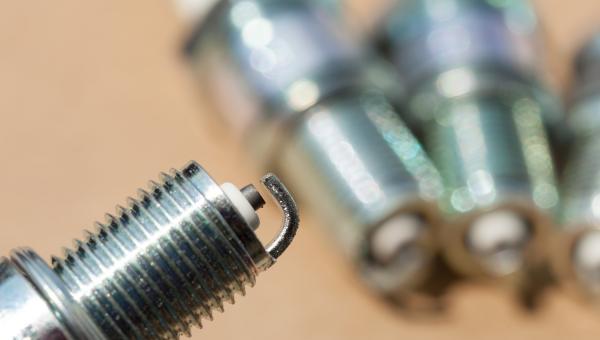Test Drive Notes Library
-
 Pros
Pros
- Electric boost. This is the plug-in hybrid version of the Mini Countryman, and it’s definitely our favorite Countryman. Everything the battery brings is a positive. It gives you about the same total horsepower as the John Cooper Works version (221 hp), while delivering about 27 mpg overall. More if you do short trips and plug in all the time.
- More than just mileage. When it’s fully charged, you only get about 14 miles of all electric, quick, quiet propulsion. Those miles are a pleasure. When the all-electric charge runs out, you still get a hybrid mileage boost. More importantly, you get an acceleration boost whenever you need it. While the gasoline engine is Mini’s modestly powered 3-cylinder, when you step on it, the electric motor in the Countryman gives you an extra kick and... zoom. It behaves almost like an extra, 87 hp turbo. It really improves the car’s performance and adds some fun.
- Fun to drive. We wouldn’t call it go-cart handling, but compared to the other compact crossovers on the market, the Countryman E is certainly fun to drive. Handling is excellent. It turns sharply and stays flat in corners. The electric boost makes the acceleration quiet, smooth and quick.
- All wheel drive. The electric motor and gasoline engine work on different axles, so, combined, you get all wheel drive. If you’re a snow belter, that’s a good option to have.
- Quirky. If aliens abducted you in your sleep one night, and then, after they were finished probing you, they dropped you in a Mini Countryman and removed your blindfold, you’d know instantly that you were in a Mini. There’s the big, round circular ring that houses the video screen, the metal toggle switches, the rave-like colored LED lighting. If you like it, it’s unlike any other car interior. If you hate it, that’s why it’s unlike any other car interior. We like it. It’s fun. And aside from their quirky design and placement, the basic switches themselves are useful and intuitive.
- Reasonable room. Mini has caught a raft of exhaust for making Minis not-so-mini anymore. But for those people who want a car they can use everyday, carry a couple of passengers or kids in, and toss a dog or some luggage in the back of, the Mini Countryman makes a good deal of sense. It’s small, but it’s not “I’m going to regret this” small. The front seats are comfortable, and certainly roomy enough. Surprisingly, rear seat room isn’t bad either.
- Touch screen and iDrive. You have your choice. So for those who like to reach and jab, there’s the touch screen. If you’d rather spin the wheel and control the menus from a knob between the seats, you can do that instead. While it takes some getting used to, the menus make sense, and hard buttons allow you to skip the screen entirely for basic functions.
-
 Cons
Cons
- Missing safety. You can get an “Active Driving Assistant” package for the Countryman. That includes adaptive cruise control and frontal collision warning. Oddly, and unfortunately, you can’t get automatic emergency braking on the Countryman. Nor can you get blind spot warning. Those are deal breakers for us. We wouldn’t buy a new car in 2018 without those features. Certainly not one that costs $40,000, when you can now get that stuff in cars costing almost half that much.
- Hard ride. You want to feel the road? You’ll feel the road in the Countryman. You’ll feel every bump. It’s not punishing, but neither is it really comfortable. It’s firm. Consider it the price for the sporty handling. The harder-sidewalled run-flat tires don’t help. Fine on smooth highways, very noticeable on rougher roads. Make sure your test drive includes some of both.
- Noise. The electric drive makes the Countryman scoot quietly around town when it’s charged up. At higher speeds, wind noise comes into play.
- Energy display. We had a hard time finding a screen that told us where the car was getting it’s power from. If you’ve ever driven a Prius, you know there’s a prominent screen up high on the dashboard that tells you when you’re using battery power and when you’re using gasoline power. Mini’s comparable screen is buried several menus deep. At first, that was an annoyance, because — as science geeks — we wanted to know how the car was working. But after driving it for week, we stopped caring. And, in fact, maybe it’s better not to care. Just drive the thing and enjoy the better mileage and electric boost when you need it. And keep your eyes on the road instead of watching the screen. On second thought, we withdraw this criticism entirely.
- Relocated volume. For years, Minis had rocker volume switches on the back of the steering wheel, right where your index and middle finger naturally rested. We loved those, and are sorry to see them moved to the front of the steering wheel, where you have to look away from the road to find them.
- Add-on heads up display. Heads up displays are great. They project key information (including navigation directions) out in front of the windshield, so you don’t have to take your eyes off the road. Mini’s works reasonably well, but it has a pop-up plastic screen, rather than being built into the top of the dashboard. As such, we found it less adjustable than better systems.
- Silly LED lights. Inside the Mini, there are colored LED lights, which you can adjust from the screen menu. It seems like a gimmick you’ll get sick of.
Test Drive Notes Library
Get the Car Talk Newsletter
 Pros
Pros Cons
Cons


